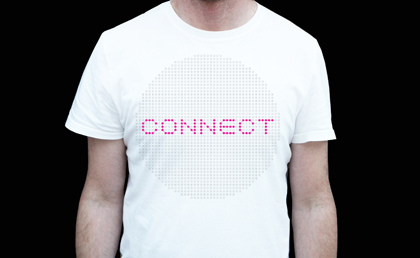Important new technologies don’t always come with a fancy, approachable, name. Few, for example, can tell what “distributed dynamic web service composition” might be. And yet, it’s the scientific description of an upcoming technology that has the potential to change our everyday life as nothing else did since the invention of the world wide web.
Given that “distributed dynamic web service composition” is quite a mouthful, some technology pundits and marketeers have started calling this development, “the internet of things”. Much more catchy, but still quite unclear.
What either term describes is a future were the “intelligence” of PCs (and post-PC devices like smartphones and tablets) won’t be constrained inside their enclosure, but will be able to reach everything around it, making our lives easier, freeing us from mundane tasks and letting us concentrate our attention where it’s really needed.
In as few words as possible, we’re talking about a future where everything (your car, your fridge, a road sign, a bus, an airport flight board, a building) is connected to the internet, providing information about itself, offering certain services to connected devices, and having the ability to co-ordinate certain actions itself. Actions ranging from the simple (a cab that notifies you when it arrives at the pickup location, your mobile automatically displays a floor map of a huge office building) to the evolved (your smart watch assesses your body status and calls an ambulance as you’re about to have an allergic shock, passing along all necessary information).
I’m not describing vapourware; I’ve seen this future myself. My company participated in a three year long research programme, CHOReOS (www.choreos.eu), under the auspices of the EU and in collaboration with (French research organisation) INRIA and industry group THALES, helping bring these technologies closer to the mass market.
The set of technologies enabling this “distributed dynamic web service composition” (or, if you prefer, “the internet of things”), will have a great impact not just in the computer industry but also in our everyday life. It will, essentially, connect the whole world, including buildings, vehicles, consumer electronics and other inanimate objects into one big network that exchanges information and services.
As you may know, it’s standard practice in most countries to force individuals and businesses to make certain data public. From companies that trade in the stock market, that have to make their financial information available, to restaurants that are forced to display a menu listing their prices. There are numerous similar laws regarding information availability ― including the recent trend of “open government” initiatives, where state records and actions are made available on the internet.
That’s all handy, but to really take advantage of the full revolutionary potential of the “internet of things”, we need to further develop the appropriate policies and legal frameworks to facilitate its adoption and boost the kind of information sharing necessary.
In order to build tomorrow’s smart services, we’ll need an increase in the quantity and volume of information shared ― from bus schedules to building layouts, and from restaurant menus to apartments for rent.
But, more importantly, we’ll need interchange standards and data formats. Getting the information up on the internet is just the first step — making it available in a format that other programs can read and interact with (e.g query or perform a transaction) is even more important.
In simple words, when I walk from Omonia Square in Athens to Syntagma, my mobile phone should be able to tell which nearby coffee houses serve an espresso the way I like it and in what price, which apartments are for rent nearby, when the next bus to where I live departs, and much more. And I should also be able to interact with these connected hubs of data; to buy a ticket for said bus with my mobile or to make a reservation to a nearby restaurant.
If you’re old enough to remember the fad about “smart fridges” (able to connect to the internet), you’d surely have wondered “what’s the point in that?”. When these kind of devices come back again, it will be different. And it’s the availability of data (and services based on those data) that will make the “internet of things” a success.
I believe there’s a great opportunity for the European Union to be in the forefront of the race to the “internet of things”, and leave the US, China, Japan and the rest of the world players behind, by setting up a legal framework for “distributed dynamic web service composition”.
Brussels officials being bureaucrats might be a weakness at times, but it’s also one of EU’s strengths. In the sense that we can agree to and enforce better standards quicker, whereas Americans usually look upon government interference in such things with suspicion, and let the market to (slowly) decide for itself (and not always for the better; remember VHS vs Betamax, or Qwerty vs Dvorak).
From the technical side, the task is quite simple. We just have to agree upon a flexible and extensible standard protocol to publish information in, such that it can be read by third party programs and services. Ideally a self-documenting format. We also have to regulate that some central organisation will keep a comprehensive listing of all such data.
There have already been several recommendations on this, from CHOReOS and other research consortia. With the mess that was SOAP and co in hindsight, we should be able to design a proper agile and lightweight protocol for this. But really, the specific standard that will be selected does not matter much ― it can always be improved on the way. The important thing is to get things in motion by picking something that will be used throughout EU.
When that happens, I’m certain that the industry and users will adopt it enthusiastically and that the “internet of things” development will be especially fast. As they say, “nothing is as powerful as an idea whose time has come”. The “internet of things” is such an idea.
* Dimitris Tsingos is the founder of Virtual Trip, and president of YES and HSA.

